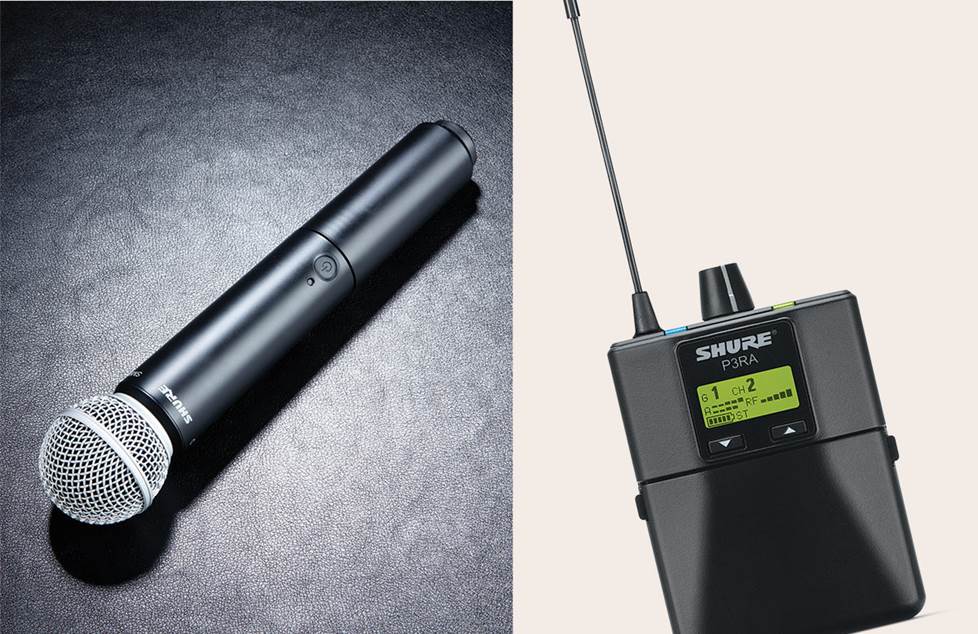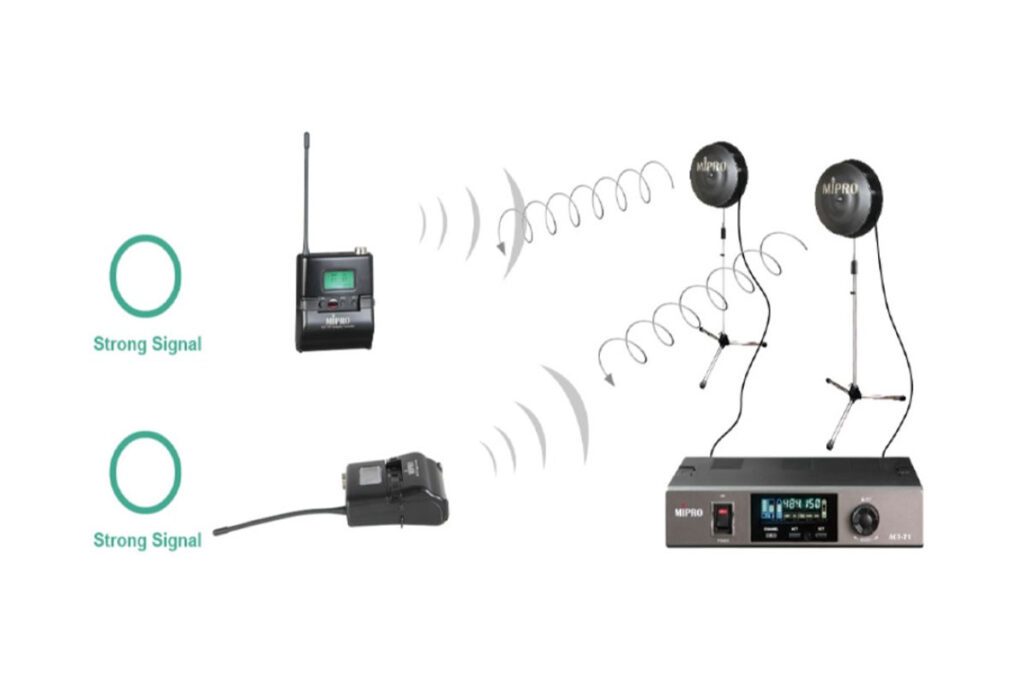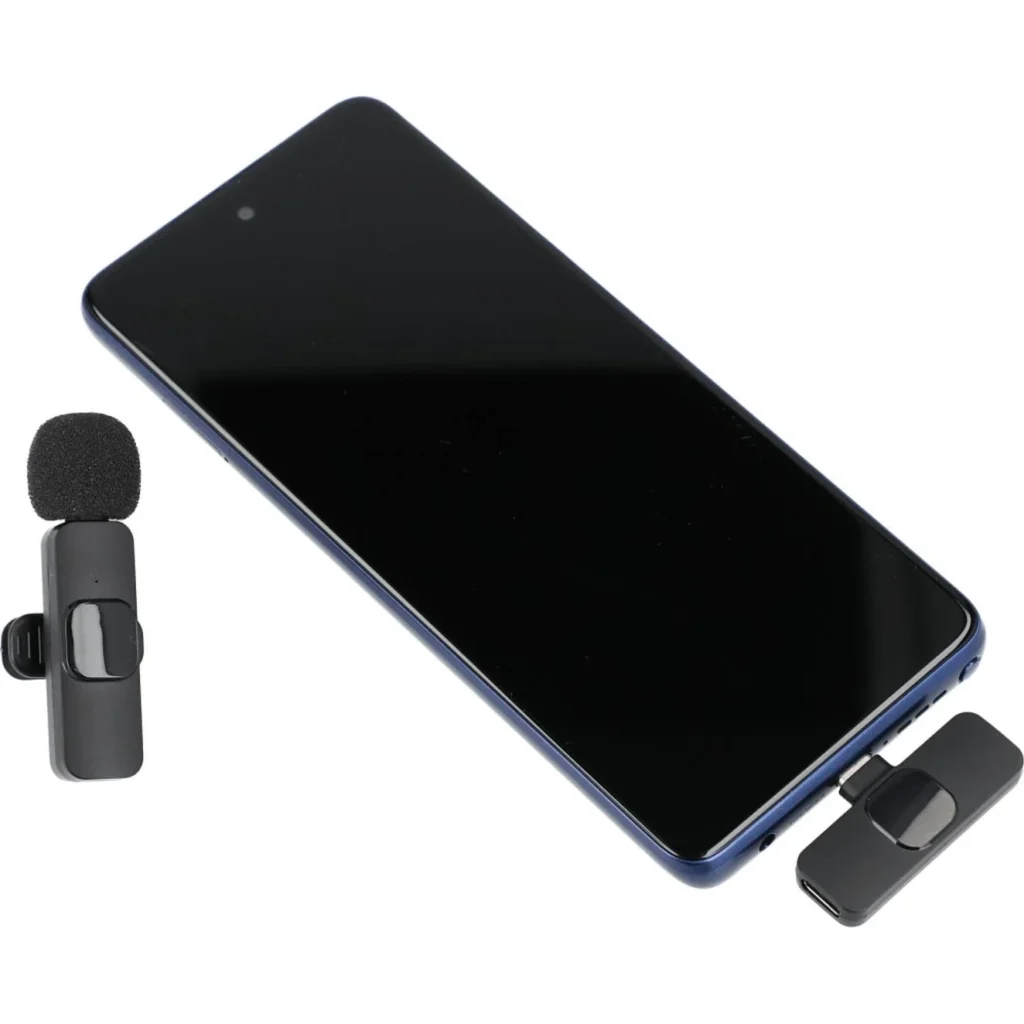In today’s fast-paced world, wireless technology is everywhere. From our cell phones to wireless microphones, these devices use radio waves to work smoothly. But with so many wireless devices around, there’s a growing worry about them interfering with each other.
‘’Yes, cell phones can interfere with wireless microphones. This interference occurs due to overlapping frequencies, causing signal disruptions and audio issues. Keeping cell phones away from wireless microphones and using different frequency bands can help mitigate this problem.’’
This article provides you solutions into this issue to understand the mechanisms behind it and explore ways to mitigate interference.
Understanding Wireless Microphones:
Wireless microphones are vital in various settings, from live concerts to corporate meetings. These devices transmit audio signals via radio frequencies (RF) from the microphone to a receiver connected to a sound system. This wireless connection offers mobility and convenience, eliminating the need for cumbersome cables.

Understanding Cell Phones:
Cell phones, or mobile phones, have become indispensable in our daily lives. They communicate by sending and receiving signals through a network of cell towers. These signals include voice calls, text messages, and internet data, all of which operate on specific frequency bands.
Which Type Of Interference Is Between Cell Phone And Wireless Microphones?
The interference between cell phones and wireless microphones primarily falls under Radio Frequency Interference (RFI).
What is RFI?
Radio Frequency Interference (RFI) occurs when two or more devices operate on the same or overlapping frequency bands, causing their signals to disrupt each other. In the context of wireless microphones and cell phones, RFI happens when the radio frequencies used by these devices overlap, leading to signal degradation or disruption.
How Cell Phones Cause RFI?
Cell phones transmit signals for voice, text, and data communication using various frequency bands, including 800 MHz, 900 MHz, 1800 MHz, and 1900 MHz.

When a cell phone is active, especially during data-intensive tasks like streaming or downloading, it emits radio signals that can interfere with the frequencies used by wireless microphones, leading to audio issues such as static, dropouts, or distorted sound.
Also Read: Can a Headphone Splitter Be Used for Microphones? – Ultimate Guide 2024!
Is Interference Of Cell Phone With Wireless Microphones Is Safe Or Not?
Cell phone interference with wireless microphones is generally not harmful but can disrupt audio quality, causing dropouts or distortion. It’s important to manage this interference to ensure clear and reliable audio during performances or broadcasts.
Detecting Interference:
Detecting interference can be straightforward if you know what to look for. Common symptoms include:
- Audio Dropouts: Sudden loss of audio signal.
- Distorted Sound: Crackling, buzzing, or other unwanted noises.
- Weak Signal: Reduced range and reliability of the wireless microphone.
Factors Influencing Interference:
Several factors can influence the likelihood and severity of interference:
- Proximity: The closer a cell phone is to the wireless microphone or its receiver, the higher the chance of interference.
- Power Levels: High-powered cell phone transmissions can overwhelm the signals from wireless microphones.
- Environmental Factors: Metal objects, walls, and other physical barriers can affect signal strength and interference.
Preventing Interference:
To prevent interference between cell phones and wireless microphones, maintain distance between devices, use different frequency bands, and implement shielding and filtering techniques. Proper placement and frequency management can also significantly reduce the risk of signal disruption.
Also Read: What Is A Microphone True Or False Answer? – You Must Know!
Future Trends:
The future of wireless microphone technology is likely to see continued advancements, including the development of more sophisticated interference mitigation techniques and the introduction of new frequency bands.
Will A 2.4 Ghz Wireless Microphone Interfere With Wifi?
Yes, a 2.4 GHz wireless microphone can interfere with WiFi because both use the same frequency band. This overlap can cause signal disruptions and reduced performance in both devices.
IEMs Interference From Phone?
In-ear monitors (IEMs) can experience interference from phones due to overlapping frequencies, leading to audio disruptions. Keeping phones away from IEMs helps minimize such issues.
5g Cell Phones Vs Wireless Mics
5G cell phones can interfere with wireless microphones, especially if the mic operates on overlapping frequency bands. Using wireless systems with frequency agility can help mitigate this interference.
Does 5g Interfere With Wireless Microphones?
Yes, 5G can interfere with wireless microphones if they share frequency bands. This can lead to audio dropouts or distortion. Using wireless systems on different frequencies or with advanced filtering can reduce this issue.

What Causes Interference With Wireless Microphones?
Interference with wireless microphones can be caused by overlapping frequencies with other devices, such as cell phones, WiFi routers, or even nearby electronic equipment, leading to signal disruption or degraded audio quality.
Can A Cell Phone Interfere With A Microphone?
Yes, cell phones can interfere with microphones by emitting radio signals that overlap with the microphone’s frequency, causing audio disruptions like static or dropouts, especially if the phone is close to the microphone.
Why Does My Wireless Mic Keep Cutting Out?
A wireless mic might cut out due to interference from other devices, such as cell phones, poor signal strength, or low battery. Checking frequency settings and minimizing nearby electronic devices can help resolve these issues.
How Do I Get Rid Of Wireless Microphone Interference?
To eliminate interference, keep microphones away from potential sources like cell phones, use different frequency bands, and ensure proper signal strength. Additionally, consider using shielding and advanced wireless systems to reduce disruption.
What Are The Disadvantages Of Wireless Microphones?
Disadvantages of wireless microphones include susceptibility to interference, limited battery life, potential signal dropouts, and higher costs compared to wired systems. These factors can impact performance and reliability.
Also Read: Why Does My Earbud Microphone Sound Muffled? Complete Guide 2024!
Cell Phone Jammer On The Same Frequency As Wireless Mics?
A cell phone jammer on the same frequency as wireless mics can cause significant interference, disrupting audio signals and causing dropouts. Such jamming is illegal in many places and should be avoided.
Cell Phones And Wireless Microphones?
Cell phones can interfere with wireless microphones by emitting signals on overlapping frequencies, leading to audio issues. Keeping cell phones away from microphones and using different frequencies can help prevent this interference.

Iphone Near Microphone Causing Interference?
Yes, an iPhone near a microphone can cause interference if it emits signals on overlapping frequencies. Moving the phone away from the microphone or placing it in airplane mode can help reduce this interference.
Can Turning Off Cell Phones Reduce Interference With Wireless Microphones?
Yes, turning off cell phones can reduce interference with wireless microphones by eliminating their signal emissions, which may overlap with the microphone’s frequency and cause audio disruptions.
What Frequencies Are Affected By Cell Phone Interference With Wireless Microphones?
Cell phone interference typically affects frequencies around 800 MHz, 900 MHz, and 1800 MHz, which can overlap with some wireless microphone bands, leading to signal disruptions and audio quality issues.
FAQS:
1. Are There Specific Wireless Microphone Brands More Susceptible To Cell Phone Interference?
Some wireless microphone brands may be more susceptible to cell phone interference due to their frequency bands or design. Checking specifications and using models with advanced interference resistance can help mitigate these issues.
2. How To Troubleshoot Wireless Microphone Interference Caused By Cell Phones?
To troubleshoot, move cell phones away from microphones, adjust microphone frequencies, and use shielding techniques. Testing different settings and minimizing electronic device proximity can also help resolve interference issues.
3. Can Cell Phone Signal Boosters Interfere With Wireless Microphones?
Yes, cell phone signal boosters can interfere with wireless microphones if they operate on overlapping frequencies. Proper frequency management and distance between devices can help minimize this interference.
4. Do Certain Cell Phone Models Cause More Interference With Wireless Microphones?
Some cell phone models may cause more interference depending on their signal strength and frequency bands. Models with higher signal power or those using overlapping frequencies can be more disruptive.
5. How To Shield Wireless Microphones From Cell Phone Interference?
To shield wireless microphones, use shielded cables, place microphones and receivers away from cell phones, and employ RF shielding materials. Adjusting frequencies and using advanced wireless systems can also reduce interference.
6. Is It Safe To Use Wireless Microphones Near Cell Towers?
Using wireless microphones near cell towers can be problematic due to potential interference from strong radio signals. Ensuring proper frequency management and distance from cell towers can help mitigate this risk.
7. Can Airplane Mode On Cell Phones Eliminate Interference With Wireless Microphones?
Yes, airplane mode disables wireless transmissions, which can eliminate interference with wireless microphones by stopping the phone from emitting signals that could overlap with the microphone’s frequency.
8. What Role Does Rf Shielding Play In Preventing Cell Phone Interference With Wireless Microphones?
RF shielding helps prevent cell phone interference by blocking or reducing unwanted radio signals that overlap with the frequencies used by wireless microphones, thereby ensuring clearer and more reliable audio.
9. Can Using A Different Frequency Band Reduce Cell Phone Interference With Wireless Microphones?
Yes, using a different frequency band for wireless microphones can help reduce cell phone interference by avoiding frequencies that overlap with cell phone signals, leading to improved audio performance.
10. How To Identify Cell Phone Interference In Wireless Microphone Audio?
Identify cell phone interference by noting symptoms like static, dropouts, or distortion in the audio. Testing with different devices and frequencies, and observing the impact of phone proximity, can help confirm interference sources.
Final Thoughts:
In conclusion, cell phones can indeed interfere with wireless microphones, primarily through Radio Frequency Interference (RFI). This interference manifests as audio disruptions like static, dropouts, or distortion, especially when the phone’s frequencies overlap with those of the microphone. To minimize such issues, keep cell phones away from microphones, use frequency management, and consider RF shielding and advanced wireless systems. Proper precautions ensure clear and reliable audio performance.
Read More:
